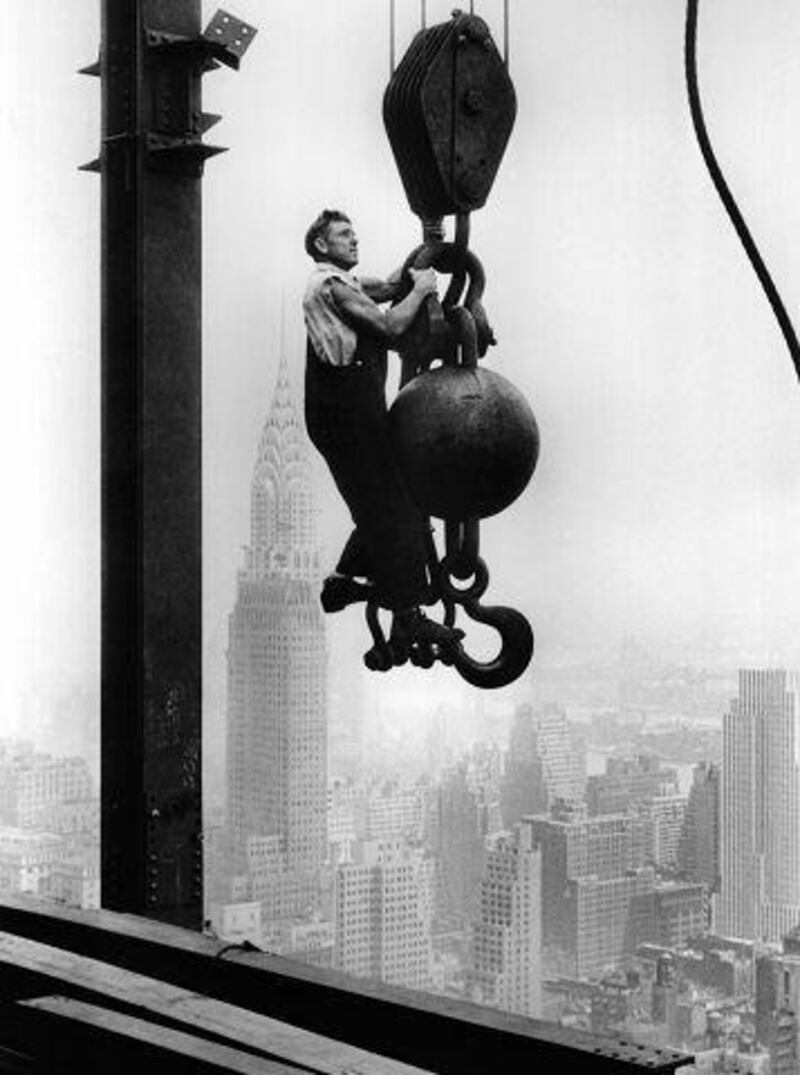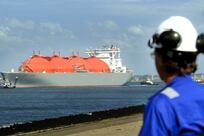Even before the current global financial crisis, super-tall buildings have a long history of losing money for their backers reaching back to New York's Empire State Building. That landmark New York edifice was completed at the height of the Great Depression and soon became known as the "Empty State Building", taking about two decades to become profitable. It remained the world's tallest tower until the World Trade Centre was officially opened in 1973.
Despite its turbulent early history, the Empire State has become one of the world's most iconic buildings. Dubai will be hoping that its record-breaking tower will have the same transforming effect after a year that has been defined by debt restructuring, the collapse of property prices and an exodus of foreign workers. Its main construction contracts were worth Dh3.3 billion (US$898 million) when awarded in 2004.
"Like no other building, the Burj Dubai embodies the development of Dubai in becoming a global city," said Jan Klerks, the research manager at the Council on Tall Buildings and Urban Habitat. "It really is the Empire State Building of the Middle East in many ways." Still, its owners will be hoping the Burj Dubai can avoid the curse of other buildings that have laid claim to the title of the world's tallest tower since the Empire State Building was completed.
Record-breaking towers have often run into problems arising from the peaks and troughs of property cycles. Often conceived in boom times and finished in downturns, super-tall buildings, generally defined as those of more than 80 storeys, can present commercial as well as engineering challenges for their owners. As Britain entered into a recession in the early 1990s, the Canary Wharf business centre in London, which includes One Canada Square, the tallest tower in the UK, failed to encourage firms to shift their offices from the traditional financial hub in the City district to the new development in east London.
With the collapse of the UK housing market came the bankruptcy of Olympia & York, the Canadian firm that developed Canary Wharf, in 1992. The company owed more than $20bn to various banks and investors when it went under. In more recent years, building towers has been popular in emerging markets such as the Gulf and Asia amid more relaxed planning restrictions compared with cities such as New York and London, as well as readily available land and funding.
The Gulf's construction boom since the turn of the millennium included developers hiring internationally renowned architects to sketch designs for their towers. However, few have made it off the drawing board. There have long been plans for a tower of 1,001 metres, the Burj Mubarak al Kabir, in Kuwait's City of Silk, although stifling bureaucracy in the country has hampered its progress. Nakheel, the Government-backed developer of Dubai's palm islands, attempted to outdo rival Emaar with its Tall Tower project, which was announced on the eve of Cityscape Dubai in 2008.
Within months the tower, which had been in the planning since about 2005, was put on hold as the global economic slowdown took hold. The financial crisis also hampered progress on the Burj al Alam, a project backed by Fortune Group, which at 501 metres was billed as the tallest office building in the world. With the recovery of the property sector a long way off and funding still problematic, particularly on the commercial side, analysts predict that it will be some time before the Burj Dubai is challenged in the record books.
Office rents in Downtown Burj Dubai, where Burj Dubai is located, have fallen as much as 50 per cent since their peak in the third quarter of 2008. "I do not see big developments like those being launched or proceeded with for the simple reason that, right now and for the foreseeable future, we're sitting on a significant oversupply in residential and commercial property," said JP Grobbelaar, a director at the property firm Colliers International.
"Right now, any commercial space would have a very slow absorption rate, so from that perspective I don't see competition for Burj Dubai." The glut of finished offices in the Dubai market could represent a challenge for investors who have acquired space in the building and were hoping to command top rents from day one. Like most of its predecessors in the record books, the Burj Dubai is likely to be hurt by the same market forces that apply to the lesser office blocks it overlooks.
The longer term outlook looks more upbeat, said Steven Coates, the head of the UAE practice at Davis Langdon, a construction consultancy. He expects both the building and the surrounding area of the city to benefit from the bragging rights it brings. "There's no doubt that the iconic nature of that building is the reason why everything around it will be so successful," he said. @Email:agiuffrida@thenational.ae
scronin@thenational.ae






